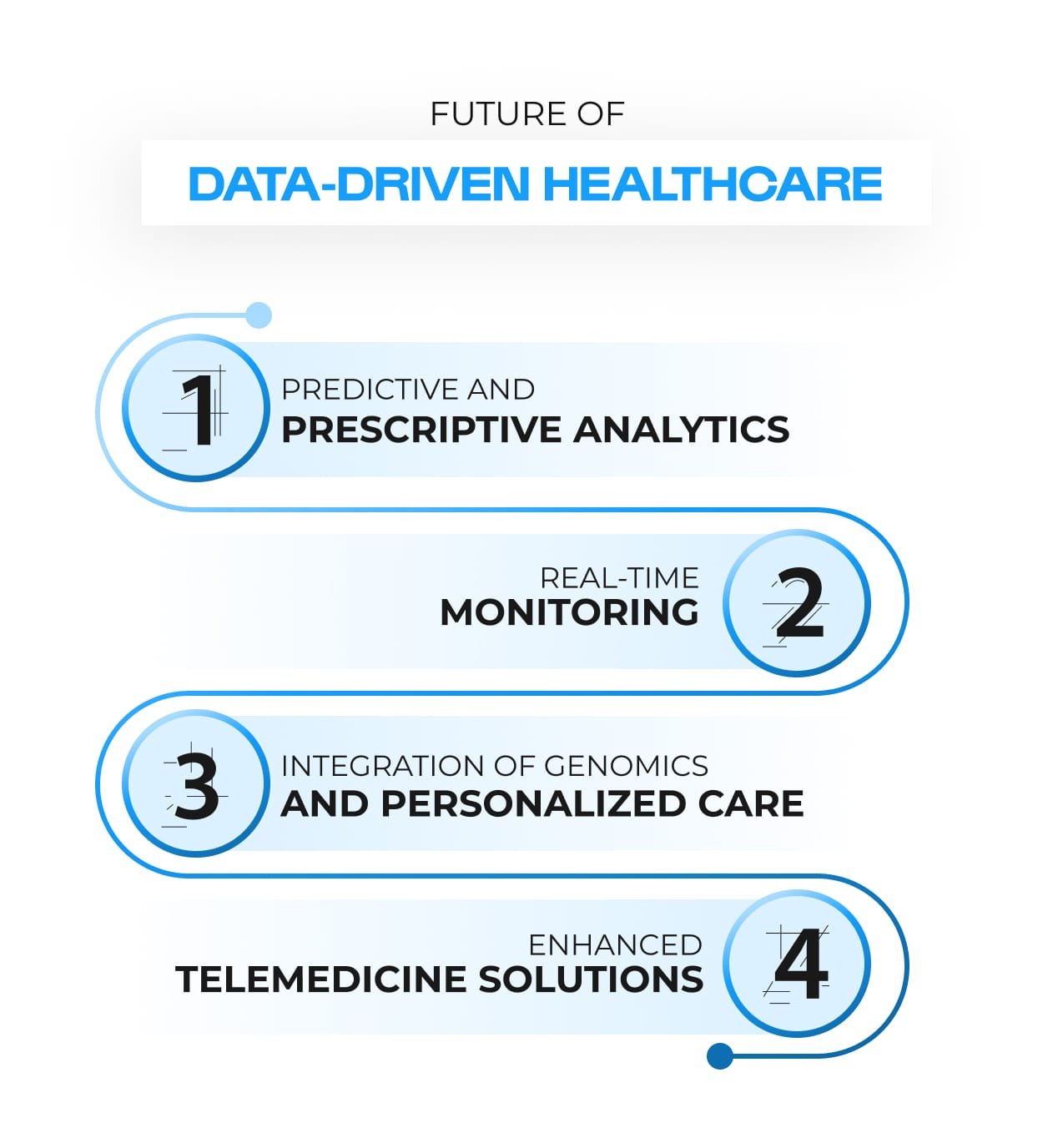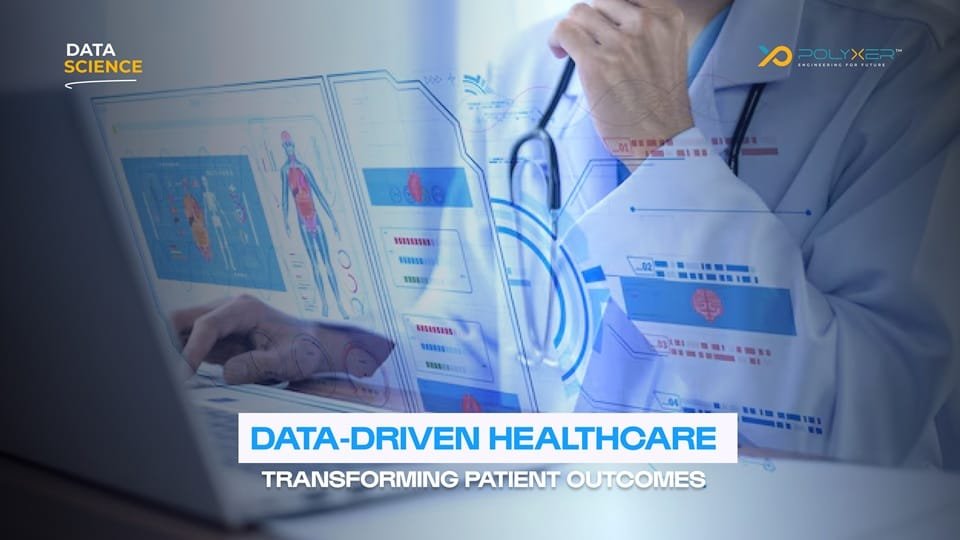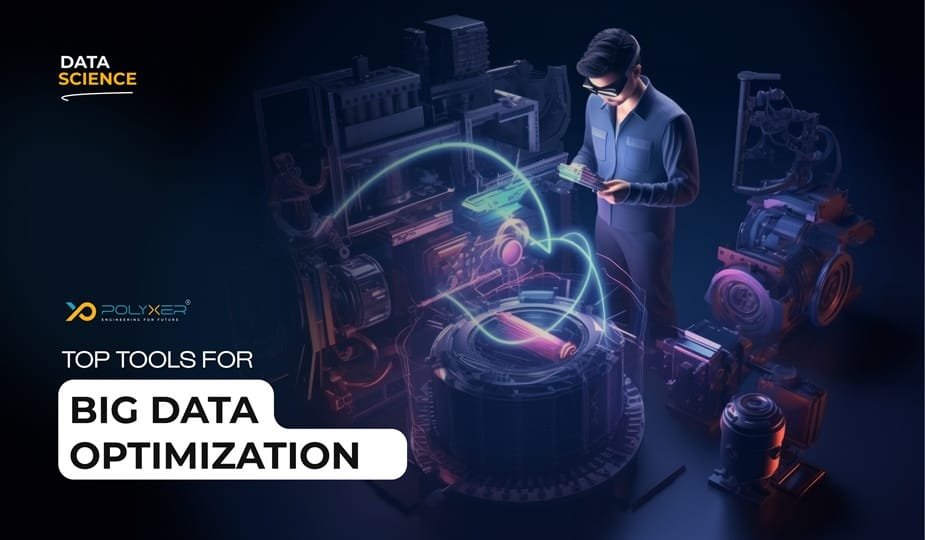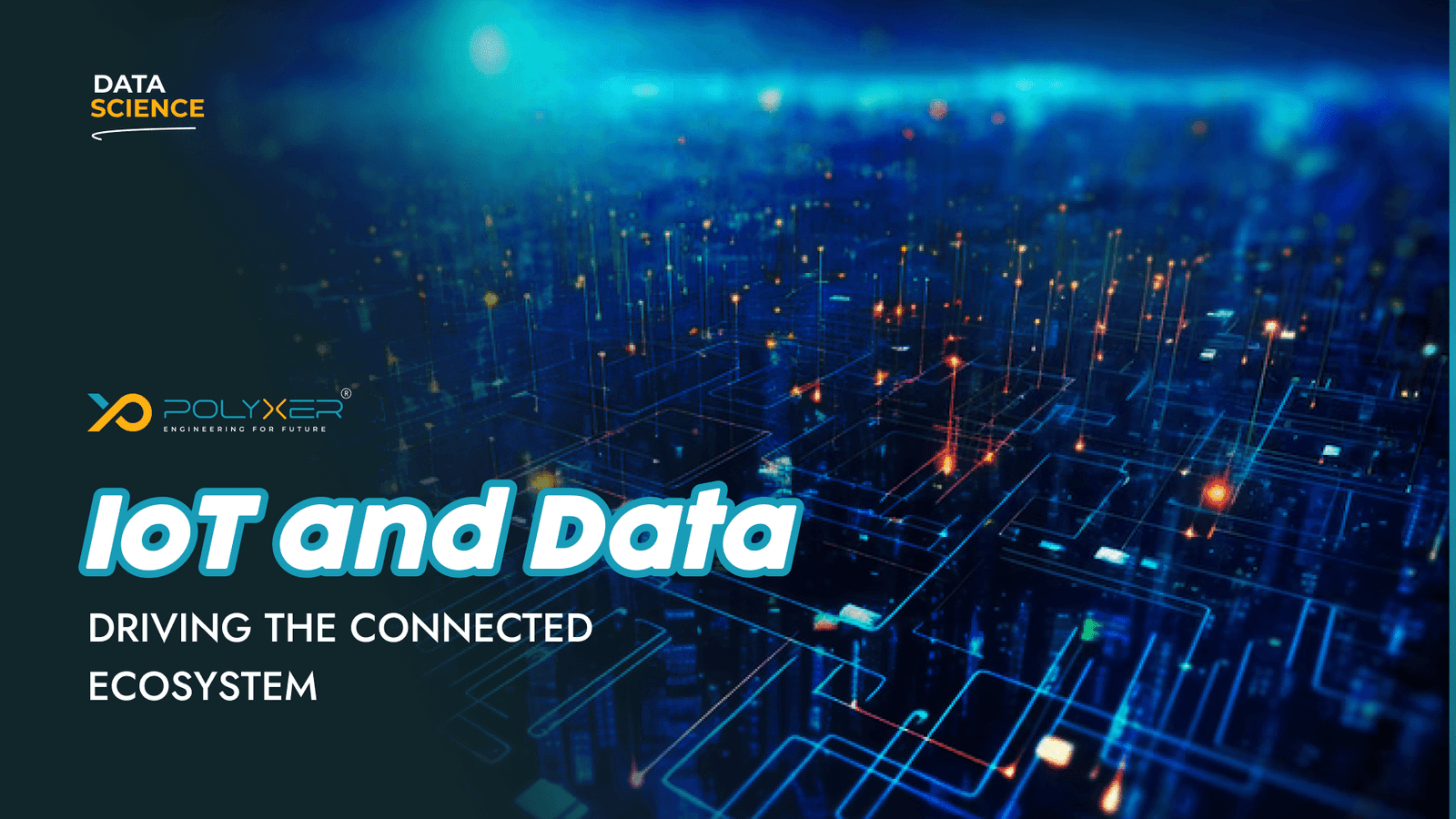
Data Literacy: Empowering the Workforce is a Key to Success

Implementing Big Data Solutions at Scale
The healthcare industry is going through significant change, inspired by adopting data-driven functioning. With the advent of advanced analytics, Artificial Intelligence (AI), and Big Data, healthcare organizations are developing from traditional practices to modern data-centered approaches. This development offers opportunities to improve patient results, increase operating capacity and respond to constant reactions to health challenges.
According to ASB Resources, data-driven health solutions, including predictive modeling and personal care scheme, have improved a lot of patient outcomes by allowing personal interventions to health professionals.
As we move forward in this newsletter, we will understand how data-driven medical treatment is bringing revolution in the face of the drug by offering real-life examples and discusses the challenges and results of such changes.
Understanding Data-Driven Healthcare
Data-driven healthcare refers to the systematic use of data analytics derived from the electronic health records (EHRS), wearable equipment, genomic sequencing and patient response to make information about the patient's care and operational procedures. This approach encourages the integration of data in various ecosystems, promoting individual, data-based care for patients.
Key Components of Data-Driven Healthcare
- Electronic Health Records (EHRs): Modern EHR systems capture comprehensive patient data that can be analyzed to make informed health decision making, track health trends and provide timely intervention.
- Wearable Technology: Smartwatch and fitness trackers collect real -time data on patients vital, activity levels and sleep patterns, which can be used to adjust to ongoing monitoring and care plans.
- Data Analytics: Advanced analytics leverages algorithms and machine learning models to identify patterns in patient data, predict the results and get actionable insights for preventive care and personal treatment.
- Interoperability: It is important for various information systems and applications capacity, integrated care routes and streamlined workflows to communicate and exchange data in data-driven healthcare.
- Patient Engagement Tools: Solutions such as patients' portal and mobile applications make patients accessible to their data, manage appointments and actively engage in their health journey.

Key Components of Data-Driven Healthcare
Transformative Impact on Patient Outcomes
1. Personalized Medicine
Data-driven healthcare enables the development of individual treatment plans to suit the needs of an individual patient. By analyzing genetic information with lifestyle data, healthcare providers can determine the most effective strategies for treatment.
Example: Oncology Care has seen significant progresses through individual therapy, where the genetic profiling of the tumor enables oncologist to recommend targeted treatments based on the specific mutation in cancer cells. For example, drugs targeting Her2 receptors have changed the treatment of breast cancer, which has improved the response rate and the time of survival.
2. Early Detection and Prevention
Predictive Analytics can highlight the pattern in patient data that indicates potential health issues before they proceed. Initial intervention can prevent complications and improve the patient's results.
Example: A pilot study in a major hospital used machine learning algorithms to analyze EHR and identify high -risk patients for sepsis. By recognizing the initial warning signs through the data pattern, the hospital successfully improved awareness among doctors, which led to a 20% decrease in mortality related to sepsis.
3. Chronic Disease Management
Data-operated strategies are important in managing chronic diseases, allowing healthcare providers to closely monitor the patient's progression and adjust treatment plans as necessary.
Example: Diabetes management programs that integrate wearable glucose monitors and mobile applications, patients enable real time tracking of glucose levels. A diabetic care program used data integration tools to respond to patients on its glucose reading and food intake. This approach not only strengthened patients to make informed lifestyle options but also resulted in the reduction of the hospital's admission by 25%.
4. Enhanced Operational Efficiencies
Data analytics not only improves the care of the patient but also increases the operational aspects of healthcare organizations. By analyzing the needs of patients flow, resource usage and staffing, healthcare organizations can improve efficiency and reduce costs.
Example: A healthcare system implemented a data-powered scheduling tool that optimizes the use of the operating room based on historical data and patient needs. By analyzing the time of previous surgery and recovery, they managed to reduce the patient waiting time for surgery by 30%, which improved the patient satisfaction score.

Transformative Impact on Patient Outcomes
Real Life Case Studies
Case Study 1: Intermountain Healthcare
Background:
Intermountain Healthcare is a non -profit health system located in Utah, which is recognized for its commitment to innovation and quality care. The organization serves more than 1 million patients annually and operates many hospitals, outpatient centers and clinics.
Implementation of Data-Driven Strategies
- Predictive Analytics: Intermountan developed a strong predictive analytics model called "Clinical Integration Program". The system analyzes EHR data from its healthcare network to identify high -risk patients for complications, such as heart attack and diabetes related issues.
- Standardized Treatment Protocols: With insights obtained from predictive analytics, Intermountain from the standardized treatment protocol for various conditions, ensuring that care was based on the best available data. This included creating data-based routes that would follow to provide consistent and high-quality care in the physician organization.
- Patient Engagement Tools: Intermountain implemented patient engagement solutions, such as my health patients, which empowers patients to see their medical records, look at schedule appointments and communicate directly with their healthcare providers.
Outcomes
- Reduction in Readmission Rates: By integrating the forecast analysis and standardized treatment routes, Intermountain gained a 30% decrease in hospital reading rates for patients with heart failure within the first year. It prevents the cost of repeat admissions and the patient's results were greatly improved.
- Increased Patient Satisfaction: The use of patient engagement equipment contributed to 25% increase in the patient's satisfaction score, which reflects better communication and control over their health care. Patients expressed more empowerment and transparency in their health management processes.
- Cost Savings: Intermountain referred to a sufficient decline in unnecessary tests and processes by following data-based treatment protocols, estimated in savings $ 2 million in a year.
Case Study 2: Mayo Clinic
Background:
The Mayo Clinic is one of the largest and most famous medical centers in the United States, known to focus on patient-based care, research and education. With the mission of providing extraordinary care, the Mayo Clinic has adopted data-driven strategies to elevate the patient results.
Implementation of Data-Driven Strategies
1. Genomic Medicine: Mayo Clinic established a comprehensive genomics program that integrates genomic data analysis in clinical care. The program uses the next generation sequencing (NGS) technologies to identify genetic markers associated with various diseases.
2. Electronic Health Records Integration: By combining genomic data with EHRS, Mayo Clinic developed personal treatment plans for patients, especially in areas of oncology and rare genetic disorders.
3. Population Health Management: Mayo Clinic used advanced analytics for population health management, allowing them to identify health trends and inequalities within a specific population. This approach enables active intervention and targeted outreach programs.
Outcomes
- Improved Cancer Treatment: Through the use of genomic data, the Mayo Clinic successfully reduces individual cancer treatment schemes for more than 50% of its oncology patients, improving the results of treatment and reduced side effects. Patients received analog therapy based on their genetic profile, resulting in a high response rate for treatment.
- Mutational Screening in Rare Diseases: Integration of genomic data has facilitated rapid diagnosis for patients with rare genetic disorders, which has reduced the average clinical journey to few weeks from years.
- Enhancing Preventive Care: Using population health analytics, Mayo Clinic identified high-risk groups for heart diseases and diabetes. The targeted outreach led the development of community welfare programs, resulting in a significant decrease in admission to the hospital for these conditions in risk patients.
Conclusion
Both Intermountain Healthcare and Mayo Clinic gave examples of how data-driven approaches can revolutionize the patient's care, improve results, and increase operating capacity. Through the integration of predictive analytics, patient engagement equipment and individual treatment strategies, these healthcare organizations are moving forward in changing the future of healthcare. By leveraging the data effectively, they demonstrate the intensive effect of data-operated healthcare on patient results, satisfaction and performance of the overall health system.
Future of Data-Driven Healthcare
The future of healthcare is undoubtedly data driven. Artificial intelligence, machine learning and big data analytics will continue to transform the innovation landscape. Here are some anticipated progresses:
1. Predictive and Prescriptive Analytics
As analytics capabilities move forward, the healthcare provider will use predictive and prescriptive analytics tools to remove the needs of the patient and will effectively determine preventive measures.
2. Real-Time Monitoring
With the growing accessibility of wearable health technology, real -time monitoring patients will allow for continuous tracking of health parameters, giving more timely intervention and better results.
3. Integration of Genomics and Personalized Care
Integration of genomic data with traditional clinical data will enable even more individual treatment plans. As genomic sequencing becomes more accessible, healthcare providers can offer targeted treatments based on individual genetic profiles.
4. Enhanced Telemedicine Solutions
The rise of telemedicine and remote monitoring of patient will continue to flourish by bringing health services to the homes of patients. Data-driven insights will guide the virtual care practices, increase patient-provider interactions.

Future of Data-Driven Healthcare
Final Thoughts
Data-based healthcare is a transformational force that can significantly increase the results by utilizing advanced analytics, improving operational capacity, and promoting the culture of active and personal care. Although challenges aside, the probability of improving decision making, increase in engagement and better health results is very high.
As healthcare organizations embrace data-driven functioning, they will not only improve individual patient experiences but will also contribute to the overall health of communities. Adopting data-based healthcare requires commitment, innovation and cooperation among all stakeholders, eventually leading to healthy life and constant well-being for everyone.
In this rapidly developed landscape, it is necessary that the healthcare provider, policy maker and technology developers continue working together to utilize the full capacity of data-driven healthcare, eventually change the future of medical and patient care as we know.
This Article is Also available here.






